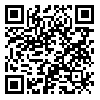Volume 2, Issue 2 (17 2003)
ijdld 2003, 2(2): 75-92 |
Back to browse issues page
Download citation:
BibTeX | RIS | EndNote | Medlars | ProCite | Reference Manager | RefWorks
Send citation to:



BibTeX | RIS | EndNote | Medlars | ProCite | Reference Manager | RefWorks
Send citation to:
Adeli K. MOLECULAR MECHANISMS OF METABOLIC DYSLIPIDEMIA IN INSULIN RESISTANCE STATES. ijdld 2003; 2 (2) :75-92
URL: http://ijdld.tums.ac.ir/article-1-462-en.html
URL: http://ijdld.tums.ac.ir/article-1-462-en.html
Abstract: (33410 Views)
Insulin resistant states are emerging rapidly and lots of efforts have gone into understanding their pathogenesis and major metabolic consequences. Hypertriglyceridemia, a major complication of this metabolic syndrome, seems to be caused by overproduction of lipoproteins (LPs) containing apo B that are rich in triglycerides.
Some in vitro and in vivo models have been introduced so as to understand mechanisms governing lipid metabolism in insulin resistance states. Human and animal studies have suggested a key role for overproduction of VLDL in hypertriglyceridemia and dyslipidemic states.
Recently, we have employed a diet-induced animal model of insulin resistance (hamster fed with fructose) in our laboratory in order to examine the relationship among development of insulin resistant state, impaired metabolism of LPs and overproduction of LPs containing apo B. These experiments have indicated that insulin resistant states occur along with overproduction of VLDL containing apoB105 from liver and enteral LPs rich in apo B 48. In insulin resistant states, decreased metabolic signaling to liver and intestine seems to play a critical role in overproduction of LPs. We have also been recognized a number of intracellular factors which may regulate VLDL production.
This article reviews recent advances in the area the hypothesis indicating that a complex interaction exist between increased free fatty acids flow from peripheral tissues to the liver and intestine (caused by hyperinsulinemia) and prolonged lipogenesis has also been expounded.
| Rights and permissions | |
 |
This work is licensed under a Creative Commons Attribution-NonCommercial 4.0 International License. |





